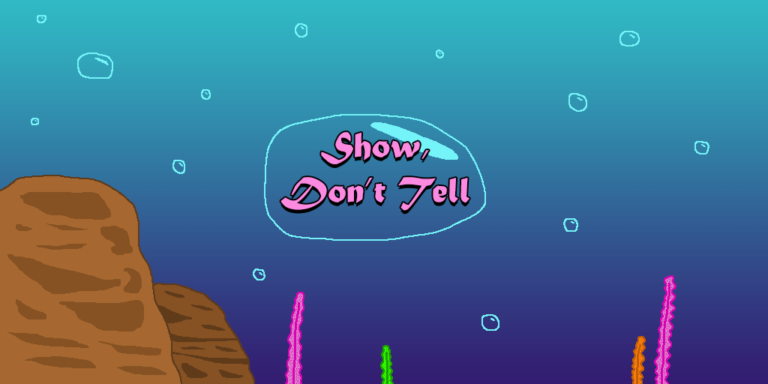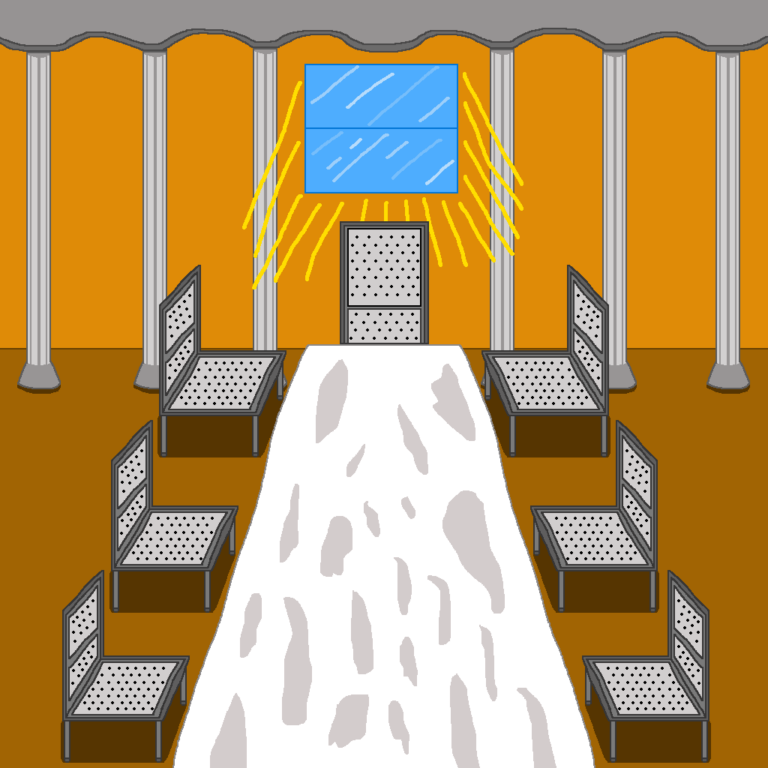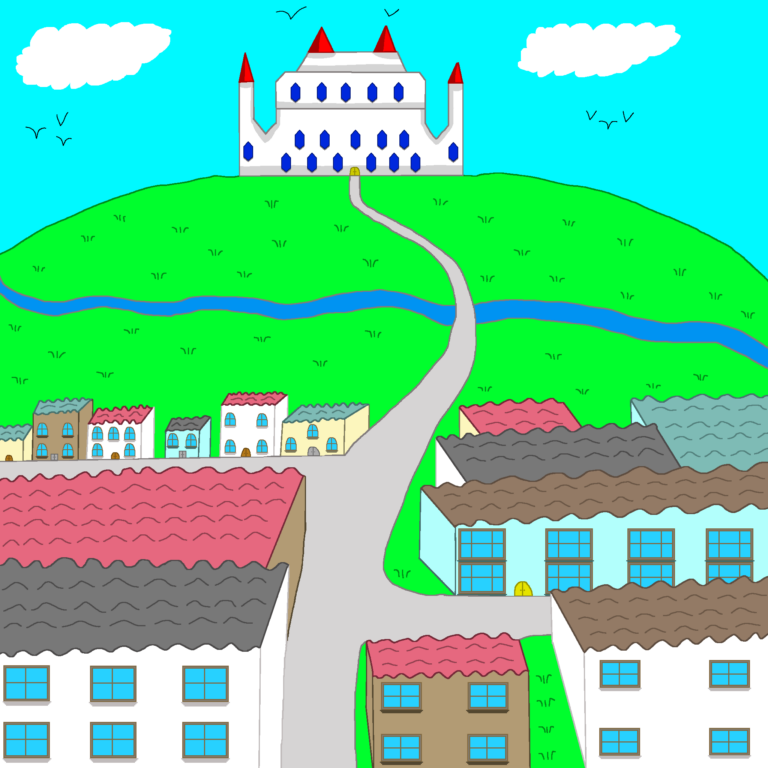Join US
Do you want to build the fantasy world you’ve always dreamed of?
Subscribe to receive notifications when a new post is out and for our monthly newsletter!
You can always unsubscribe anytime.


There are many routes writers take to tell a story people return to over and over again. Some prefer writing in flowery language, others have the big picture in mind and slowly fill it in over time and have their readers follow along. However, there is one ingredient so essential to writing a great story that without, it’s just one of many stories and that would be show, don’t tell.
Show, don’t tell is a narrative technique that means to show readers what’s going on instead of merely telling them. Using this concept makes it easy for readers to form a connection to your world and characters, since they’re experiencing the same things the characters are. Readers feel like they’re there, instead of merely reading about it.
All great stories incorporate show, don’t tell in varying fashion. In scenes, it’s used to accentuate intense emotions characters feel at any given point in time as they either argue with someone else or travel through a dangerous environment like a cave. It’s also a great worldbuilding tool as writers describe the atmosphere of a place to make readers imagine it in their minds.
Using this concept effectively takes a story to greater heights. There are a number of ways to accomplish this and there may be times where you’ll have to rewrite a scene over and over again until you get it right. It’s important that you take your time here.
There are some scenarios where it would be best to avoid using show, don’t tell. One would be where it would distract from the story in a scene. A core fundamental of writing a book is that every scene must move forward and you want to eliminate those that impede it moving forward. If using this device makes it hard to move the story forward, it would be best to drop it at least from the scene you’re working on.
This is article number twenty in our writing a fantasy book series. If you want to take a gander at our many other articles, you can find them on our blog page.
Let’s take a look at what this concept entails. In simple terms, it’s a narrative device that writers use to tell the story in a way that makes it easy for the audience to experience it through many things like actions, feelings, and so on. Essentially readers are being shown what’s going on instead of being told what’s going on.
Show, don’t tell is a tricky skill to master but understanding it is key to becoming a great writer. There is a fundamental difference between show and tell and understanding this makes it easier to master this skill.
Let’s use a scenario to showcase the difference between the two. Imagine you’re writing a story where your protagonist lives in a magical forest where trees can talk. He goes to speak with the tree guarding the forest who has a story he’s been waiting to tell him when the time was right.

Now there are two avenues you can use to relay the story the tree wants to tell the protagonist. You can simply write an exposition dump where the guardian tree merely tells him everything he needs to know and move onto the next scene. Or you can have him show the information he needs to know by stepping into his past, taking the protagonist and the readers on a journey, revealing what the info is and how he obtained it in the first place.
See how even though both approaches lead to the same result, they take different paths to get there? The former lacks emotional intimacy since it’s just a information dump with no emotion or feeling attached to it, a stark contrast to the latter where the reader is taken on a ride where he learns so much more about the protagonist and the guardian tree, making it easy for him to get emotionally attached to them and for him to get pulled into your story.
That’s the power of show, don’t tell. While the former takes longer to write, it pays off in so many ways that it’s absolutely worth it. Getting the hang of it will take some time but you’ll be a better writer for it!
Now that you understand how this technique works, it’s time to dive into how to use it effectively. All stories have many different scenes and we’ll explore how you can use it to great effect in these scenes. One important thing to keep in mind is that you don’t have to use it in every scene. Rather, you want to save it for noteworthy or pivotal scenes.
With dialogue-heavy scenes, you want your readers to experience what the characters are feeling and thinking as they speak to each other. You don’t necessarily need to take your readers into their heads but you still want to make it easy for them to understand the emotions behind their words and thoughts.
Let’s go with a scenario different than the one in the previous section. Imagine Bob and Victor are soldiers and they’re bickering about being assigned to guard the prince when a massive battle is breaking out just outside the city. Instead of saying that Bob considers it a honor to protect the man who one day will become king, you can show the pride pulsing in his veins at the thought of being tasked with the responsibility of protecting someone so important to the kingdom from the carnage of war. As for Victor, show how angry he feels guarding the prince when people he knew and grew up with were out there, fighting to defend their country when he’s just standing around, not out there helping them instead of saying he’s not happy guarding the prince. See how much readers learn about them when you use show, don’t tell like this?

You can apply this concept to other kinds of scenes such ones that contain adventures and battles. Instead of stating that the protagonist and his allies are trekking through a dangerous area like the swamp, make the readers feel the atmosphere of the place. You do so by highlighting its forbidding ambience, dangerous critters, and the uneasiness the characters feel as they navigate it, hoping to get to the other side unscathed.
In regard to battle scenes, whether it’s a grand brouhaha between multiple armies or a fight between the hero and the villain, have readers feel like they’re smack-dab in the battlefield. Show the chaos of the battleground by having them hear all kinds of shouts and screams, swords clashing, and other sounds you hear there. Also show the fear and uncertainty that they’ll survive the battle. Using show, don’t tell in this fashion makes for powerful, riveting imagery that you just don’t get when you just tell readers what’s going on.
Where show, don’t tell truly shines is in information-driven scenes that impact the story in a meaningful way where the protagonist — and by extension, readers — take a step through history. Sure, you can do a simple exposition dump but if you want to emphasize how important the lore is to the story, you need to show why it’s important. You can use flashbacks or show it through the perspective of the character telling it. Here you reveal how he received it in the first place and he had to choose whether to keep it secret or not. This makes for compelling reading.
Show, don’t tell is a powerful narrative technique that when used correctly, makes it easy for the readers to get emotionally attached to the story and the characters. Though you can use it in pretty much any scene, there are times where it would be better to leave it out.
Every scene must move the story forward, whether it’s a small step or gigantic leap. That means everything that transpires within must be salient and relevant to the plot. If show, don’t tell takes away from said scene, eliminate it. You don’t want readers to feel like a scene is unnecessarily dragging on.

All stories contain both major and minor scenes. The latter doesn’t need show, don’t tell since they don’t impact the plot in a significant way. They simply serve as a bridge between major scenes, a way for both the characters and readers to get some respite. Using this narrative technique in a minor scene will only confuse readers who might initially mistake it as a major one, only to be met with disappointment when nothing of importance happens in said scene.
Show, don’t tell and mundane tasks are a big no-no! Mundane tasks could be characters buying supplies at the store or gathering firewood. Readers know that characters buy supplies regularly on long journeys or hunt for animals for sustenance; they don’t need nor care to know the details. There is an exception to this though: if said event is germane to the story like the protagonist’s first time hunting or bargaining for supplies, it’s okay to use it though you definitely want to avoid using it going forward.
Using it to describe the same place repeatedly is a bad idea. Once you describe a place that’s central to the story like a castle or city that readers will return to multiple times throughout for the first time, you don’t need to do it every time you go back there. After you’ve shown them what it looks like, they know what it looks like so you don’t need to repeat it again. Doing so needlessly stretches the tale. However, if said place undergoes a major change at some point in the story, — like being damaged by a savage battle — you can show how much it’s changed since then.
Show, don’t tell is one of the most powerful narrative techniques to use in crafting a memorable story. It can be hard to get your arms around at first but once you understand it, it’ll be a tremendous asset to you. It’s best to take your time when using this in your scenes as you want to use it to have your readers form a connection with your characters and the story.
This concept simply shows readers what’s going on instead of telling them. You accomplish this through the use of actions and thoughts of characters and so on. Readers wind up feeling like they’re in the story, seeing things through the prism of the characters which makes it easy for them to fully immerse themselves into the tale.
You use show, don’t tell in key scenes or scenes important to the plot. It helps showcase how vital they are to the story as you delve into the emotions coursing through the characters’ minds whether they unearth information that shocks them to their core or they fight wave after wave of monsters. You can use this as a worldbuilding tool to describe the ambience of major settings.
With great power comes great responsibility and the same is true with show, don’t tell. You use this strategically to enhance the story in the right places and omit it in places where it’s not needed. Always keep in mind that the story must move forward in every scene and if this narrative technique is standing in the way of it moving forward in a particular scene, take it out of the scene.
If you’re not using show, don’t tell in your story, there’s no better time to start than now!
Let me know what you think in the comments below. (Note: this is an account-exclusive feature).
If you don’t have one, you can register here. It only takes a few moments of your time!
Liked this article and want to subscribe? All you have to do is fill out the form below and that’s it!
Thanks for reading this and until the next time,
Sunfire
Subscribing means you receive:
You can always unsubscribe anytime.
Do you want to build the fantasy world you’ve always dreamed of?
Subscribe to receive notifications when a new post is out and for our monthly newsletter!
You can always unsubscribe anytime.